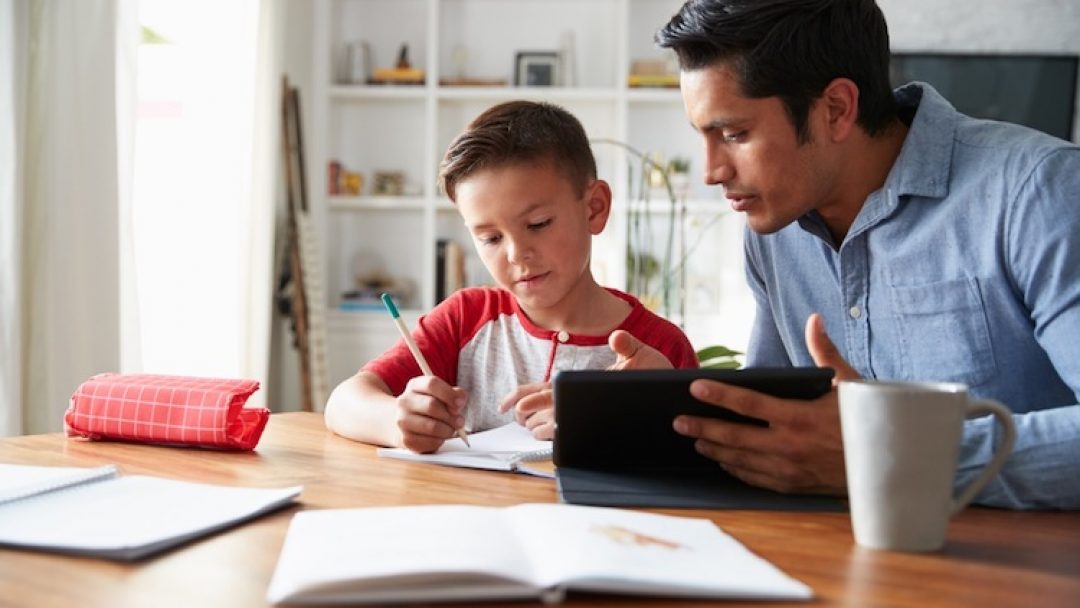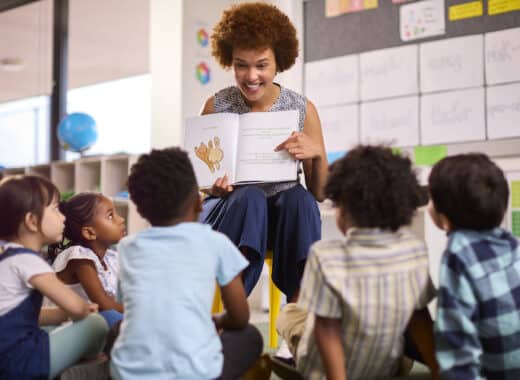Many of the nation’s largest school districts plan to begin the fall semester online only. As schools consider reopening, children face a future in which online courses will probably be part of the curriculum. To make the best of this situation, here are some tips to help your child adapt to learning from home.
Studies show that in online learning, parents often take on the role of a teacher. Making school a priority will help keep kids from treating online learning as a vacation.
Research suggests that some types of parental participation have a greater impact on children’s academic achievement than others. One analysis showed that school children benefit from discussions about learning and school-related issues with their parents and from joint readings.
A report in 2016 found that students spent about one-fifth of class time on laptops, smartphones, and tablets, knowing that doing so could harm their grades. They check these devices for “non-class purposes” 11.43 times a day on average. The majority said they do so to stay connected and to fight boredom. In virtual learning, this behavior might be even more common. Social media and web surfing may hurt students’ performance, as multiple studies show.
It might be a good idea to limit the use of the devices until the schoolwork is done. Some students may need an adult to check on them.
The surrounding environment can be a big distraction, too. Having favorite toys around can make it harder for the kid to focus. Consider setting up a quiet, clutter-free workspace that is comfortable for your child.
Higher levels of screen time are associated with a variety of health harms, such as obesity and depression. Small amounts of daily screen use are not harmful and may have some benefits.
It may be hard for some kids to sit through an entire class. Some children might need more frequent breaks than others. Include “brain breaks” in between learning. A young child may need a quick break after staying on a task for five to 25 minutes, said Linda Carling, an associate research scientist at the Johns Hopkins University School of Education Center for Technology in Education.
Allowing time for exercise before your child is expected to focus on learning might be a good idea. Repeated physical activity during school can improve children’s attention. Exercise is one of the best ways to reduce stress and prevent anxiety. You may consider having the computer on a raised surface as some children better focus on tasks when standing.
Having a consistent schedule for schoolwork will allow parents to plan the workday and let students more easily transition in and out of school time. Research shows that students who have higher GPAs are usually better at time management. Try to build as much structure and consistency as possible, setting times for meals, schoolwork, and other activities.
Before embarking on creating a schedule, there are a couple of things to consider.
Try to get children on the same schedule they had when they were going into school. That means the same wake-up time. Have kids start schoolwork at the same hour they used to start classes.
Observe your child to see what works best. Many children are more engaged and focused during the morning.
For younger children, you may want to break down segments of the class to tackle one at a time rather than having them finish a whole lesson in one sitting. Older students can usually stay focused for longer periods of time. If you have a high schooler, consider breaks between different subjects.
Every kid is unique and it’s important to find out what works best for your child. Set some time a few days into the semester to observe your child and figure out the optimal length of learning sessions, the times that they are most engaged, and what helps them maintain focus.
Allow for flexibility in the schedule. Give children a break if they are frustrated, anxious or very distracted. It’s OK to slow the pace, giving your child more time to think and process a challenging topic.
Try to maintain a planner to keep track of all school activities and homework.
For some children, a basic visual checklist of tasks will help keep them focused. It allows them to see the full scope of what they have to accomplish and what steps to take. The child would check off each task with you as it’s completed and receive a reward at the completion of the list.
Many children miss receiving reinforcement and reassurance from teachers and counselors. Building a reward system can help maintain motivation. After kids complete a task or finish a class, consider praising them.
Putting a checkmark, star, or sticker on a work assignment can go a long way to encourage a kid. Other options that may work well with younger kids are giving a sweet treat, allowing playtime with a favorite toy, or an extra 15 minutes to play before bedtime. For high schoolers, watching a movie or getting extra tablet time might be a good reward.
You may need to adjust your schedule as you go. If some class activities or subjects are more difficult, consider setting aside another time to work on that assignment. Try working with your children on more challenging tasks during the times of the day when they are most alert and engaged. Encourage your child to continue working on the things that come more easily when you are not readily available. It’s helpful to share with the teacher what works best for you and your child.
School is much more than a place to learn. It serves as a place for kids to socialize and hone their networking skills. Social ties that students have with each other have a positive effect on academic achievement.
“Children miss school, they miss their teachers, they miss their friends, and they’re living with an uncertainty of the future,” Carling said.
Many children will have new teachers and new friends. For some, it may be the first year of school. Allowing children to interact online with their friends might mitigate the effects of being socially distanced. Though a lot depends on teachers who will need to create opportunities to engage students with one another, there are ways parents can help.
Implementing social interactions into the routine will help a kid stay connected. One example is organizing a daily video chat with a friend or a group of peers. School discussion boards, real-time classroom conversations, and email communication are other ways your child can interact with peers. If a child is struggling with a task and you aren’t there to help, encourage your child to try these methods to get support.
Try to begin this academic year by opening a dialogue with your kids’ teachers. Carling recommends setting up a day and time each week to connect. Difficulties with schoolwork and technology challenges are some of the reasons to contact the teacher.
“Teachers can help with more than we really think. And they are usually willing to help. So if any of the issues come up, if a child’s not able to attend a class, if the child is unable to complete the work, if it’s really hard to get a routine set up, all those kinds of things are areas that a teacher can help with.” Carling said.
A lack of communication with the parent can be challenging for a teacher, particularly in the online learning environment. Being proactive is essential if your child is struggling in school. If a kid has difficulties with a task on deadline and you can work with the child only during the weekends, the first thing to do is get in touch with the teacher.
The worst consequences of the COVID-19 pandemic are experienced by the most vulnerable students, such as children who require an individualized education program (IEP), Carling points out. The first thing parents need to do is to meet with an IEP team and discuss what strategies and tools the school can put into place to support students in virtual learning. Work with your child’s teachers to identify and remove any learning barriers.
Many children may need more support with focus during classes. Carling recommends starting with smaller amounts of time for an activity. Reward the child for accomplishments, then gradually increase the duration of learning sessions.
Keep in mind that most phones and laptops have built-in technology that can aid kids with special needs. For example, read aloud or text-to-speech can help struggling readers, and speech-to-text can help struggling writers.
Every kid is unique and it’s important to find out what works for best for your child. Set some time a few days into the semester to observe them and figure out the optimal length of learning sessions, the times that they are most engaged, and what helps them maintain focus.








